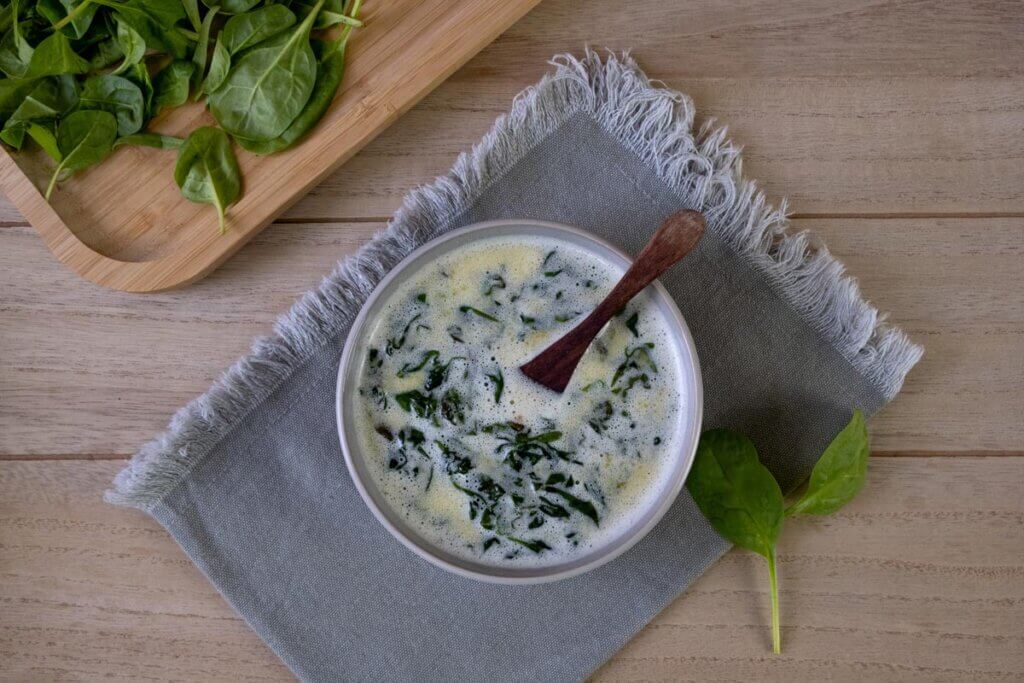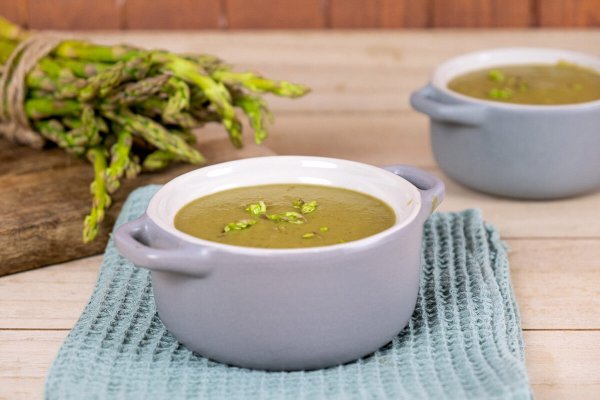Discover the zesty charm of fresh sorrel sauce, a classic French delight that will elevate your spring meals with its tangy, lemony zest. Whether you’re looking to add a bright pop of flavor to roasted vegetables or dress up a grilled chicken, sorrel sauce is the perfect companion for your spring dishes.

Table of Contents
ToggleWhy I Love This Sorrel Sauce
Sorrel is one of the easiest perennial vegetables to grow, which is good since you’ll rarely see it in markets. Sometimes described as a lemon in a leaf, sorrel’s flavor is bright, fresh, and acidic.
Combined with cream– in soup or a sauce like this, sorrel becomes the perfect balance for light proteins like seafood or poultry. Coming to us through the French food tradition, this sauce is both easy and quick, making it ideal for a last-minute garden harvest.
It’s among my favorite recipes for getting three home-cooked meals on the table each day. Along with my quick and easy pan sauce, my lemon reduction sauce or my creamy leek pasta, this is in regular rotation in the springtime.
What Is Sorrel?
Before we delve into sorrel sauce, let’s get acquainted with sorrel itself. Sorrel is a leafy green herb that belongs to the buckwheat family. It has a distinctive tart flavor and is commonly used in culinary preparations across different cuisines.
What I love most about sorrel is that it’s among the first leafy greens to grow in the spring, and since it’s a perennial, it will come back year after year; feeding your family well before you’ve even planted your summer garden.

What Does Sorrel Taste Like?
Sorrel has a tangy, lemony taste that sets it apart from other greens. Its flavor can be described as slightly sour, with hints of citrus and a subtle herbal note. It adds a refreshing and bright element to dishes, perfect for springtime creations.
Is Sorrel a Spice?
While sorrel is often used in cooking, it is not considered a spice. It is classified as an herb due to its leafy nature and culinary uses. Sorrel adds flavor and freshness to dishes, similar to other herbs like parsley or basil.

What Is Sorrel Sauce Made Of?
Sorrel sauce is a delectable creation primarily made from fresh sorrel leaves. This vibrant sauce is crafted by cooking down the leaves for a burst of tangy flavor. To enhance its taste, additional ingredients may include chicken broth, butter, cream, and seasoning. The combination of these flavors results in a rich and tangy sauce that pairs perfectly with a variety of dishes.
When these ingredients come together, they create an incredibly fresh sauce that elevates any meal. Whether drizzled over roasted vegetables, poached eggs, or used as a finishing touch on grilled fish or chicken, sorrel sauce brings a delightful twist to your springtime creations.

In the Homestead Kitchen
This recipe was featured in issue No. 30 of In the Homestead Kitchen Magazine, where we teach you how to spend less time striving on your homestead and more time enjoying it.
This monthly digital magazine will help you gain the knowledge, skills, inspiration, and confidence to thrive on your homestead. If you prefer a physical copy, stay tuned! We’re planning on taking this magazine to print in January 2025, so subscribe today to lock in your price!

Supplies Needed
- Saucepan – A small to medium saucepan works well for this recipe.
- Saute Pan – An additional saute pan is needed to wilt the sorrel leaves.
- Whisk – A quality whisk will help you achieve a smooth and velvety texture for your sauce.
Ingredients Needed
- Heavy Cream – Or, to make this recipe dairy-free, you can use equal parts cashews with water blended until smooth.
- Chicken Broth – Homemade chicken bone broth is recommended.
- Fresh Sorrel Leaves – Washed and stems removed.
- Salt – My favorite is Redmond Sea Salt (using this link gives you 15% off at checkout.)
- Butter – Coconut oil can be used as a dairy-free alternative.
- Shallots – To add an extra depth of flavor, consider adding sauteed sliced shallots.
- Lemon Juice – Finishing any savory dish with a squeeze of lemon brings out all the flavors that much more.
- Ground Black Pepper to Taste



How to Make French Sorrel Sauce
Making French sorrel sauce is a straightforward process that allows you to create a tangy and flavorful addition to your dishes. Follow these simple steps to make your own homemade French sorrel sauce:
- In a medium pot, combine the heavy cream and chicken broth.
- Set heat to medium and bring to a bubble. Leave to simmer during the next step.
- In a sauté pan, melt the butter.
- Once butter is melted, add optional shallots and saute. Once onions are translucent, add sorrel leaves and wilt. The leaves will reduce significantly and turn a darker green.
- Once the leaves are reduced, scrape the wilted sorrel into your bubbling cream mixture. Add salt. Stir to combine.
- Allow the sauce to come together over the heat for 2-3 minutes. If the sauce is too thick, add more chicken broth, a tablespoon at a time to thin.
- Taste sauce and salt and pepper as desired, then finish with a nice squeeze of fresh lemon juice. Stir to combine.
- Serve over fish, chicken, other poultry, roasted vegetables, or poached eggs.
Whether you drizzle it over roasted vegetables or use it to dress up grilled chicken, sorrel sauce is sure to impress your family and friends with its classic French charm.
Did you make this recipe? If so, please leave a star rating in the recipe card below. Then, snap a photo and tag us on social media @homesteadingfamily to show us how you use French sorrel sauce!

FAQ
Fresh sorrel sauce is a classic French sauce made from fresh sorrel leaves, shallots, butter, cream, lemon juice, and seasoning. It has a tangy, lemony flavor and adds a vibrant zest to spring dishes.
Sorrel has a tangy, lemony taste with a slightly sour and citrusy flavor profile. It also has subtle herbal notes, making it refreshing and perfect for springtime recipes.
No, sorrel is not considered a spice. It is classified as an herb due to its leafy nature and culinary uses. It adds flavor and freshness to dishes, similar to other herbs like parsley or basil.
To make sorrel sauce, you will need fresh sorrel leaves, butter, heavy cream, chicken bone broth, salt, and pepper. These ingredients combine to create a flavorful and vibrant sauce that elevates your dishes.
Making French sorrel sauce is simple. Heat chicken broth and cream in a saucepan. Meanwhile, melt butter in a saute pan, add the sorrel leaves and cook until wilted. Blend the mixture to form a smooth puree and strain it to remove any fibrous bits. Return the sauce to the heat, whisk in cream, salt, and pepper, and simmer until slightly thickened. Your homemade French sorrel sauce is ready to be enjoyed!
Other Posts You May Enjoy
- Gardening in Winter (Cold-Weather Growing Methods)
- Designing an Old-Fashioned Cottage Garden
- Quick & Easy Pan Sauce Recipe
- Lemon Reduction Sauce With Roasted Chicken
- Creamy Leek Pasta Recipe | Quick & Delicious
- Hearty Black Bean Enchiladas Recipe – Quick & Tasty!

Fresh Sorrel Sauce
Ingredients
- 2/3 cup heavy cream
- 1/2 cup chicken broth
- 6 ounces sorrel leaves washed and stems removed
- 1 teaspoon salt
- 2 Tablespoons butter
- 1/4 cup shallots sliced or diced (optional)
- 1 Tablespoon lemon juice optional
- ground black pepper to taste
Instructions
- In a medium pot, combine the heavy cream and chicken broth.
- Set heat to medium and bring to a bubble. Leave to simmer during the next step.
- In a sauté pan, melt the butter.
- Once butter is melted, add optional shallots and saute until translucent. Add sorrel leaves and wilt. The leaves will reduce significantly and turn a darker green.
- Once the leaves are reduced, scrape the wilted sorrel into your bubbling cream mixture. Add salt. Stir to combine.
- Allow the sauce to come together over the heat for 2-3 minutes. If the sauce is too thick, add more chicken broth, a tablespoon at a time to thin.
- Taste sauce and add salt and pepper as desired.
- Squeeze optional fresh lemon juice over the top, stir once more.
- Serve over fish, chicken, other poultry, roasted vegetables, or poached eggs.
Notes
- Read the ingredients section in the blog post above for recipe substitutions.
- Grab more of our recipes In the Homestead Kitchen Magazine.
















